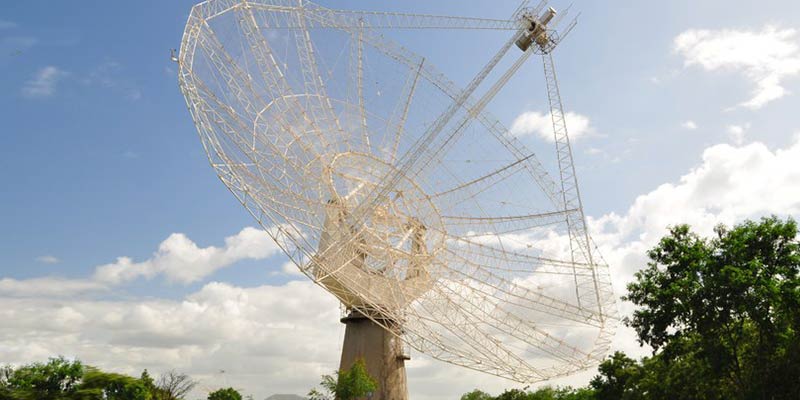- India
- Feb 21
Scientists use GMRT in Pune to study on fast radio burst
Astronomers of National Centre of Radio Astrophysics (NCRA-TIFR) in Pune and the University of California in the United States have used the Giant Metrewave Radio Telescope (GMRT) to map the distribution of atomic hydrogen gas from the host galaxy of a fast radio burst (FRB) for the first time.
The exercise has revealed exciting clues about the origin of the burst.
What is a fast radio burst?
Fast radio bursts (FRBs) are intense, millisecond-long bursts of radio waves. First discovered in 2007, their short-lived nature makes it particularly challenging to detect them and to determine their position on the sky.
FRBs are extremely bright radio pulses from distant galaxies that last for only a few milliseconds. Though a thousand have been found so far, researchers still don’t know what kind of astronomical objects can produce so much energy in so little time.
Giant Metrewave Radio Telescope (GMRT)
The Giant Metrewave Radio Telescope (GMRT) is a radio telescope located at Khodad, 80 km away from Pune, operating over 150-1420 MHz. It consists of 30 fully steerable gigantic parabolic dishes of 45m diameter. It is operated by the National Centre for Radio Astrophysics of the Tata Institute of Fundamental Research (NCRA-TIFR).
Highlights of the exercise:
• The GMRT results indicate the FRB host galaxy has undergone a recent merger and that the FRB progenitor is most likely a massive star formed due to this merger event.
• Balpreet Kaur, a PhD student at NCRA-TIFR and the lead author of the study, said this is the first case of direct evidence for a recent merger in an FRB host, a major step towards understanding the progenitors of FRBs.
• Observations of the gas and stars in the vicinity of FRBs and within their host galaxies are critical to understanding how the bursts were formed.
• Their target FRB (FRB20180916B) produces repeated very short bursts, and these have been found to arise in the outskirts of a spiral galaxy half a billion light-years away.
• FRB20180916B is thus one of the closest known FRBs, an ideal candidate to study the local burst environment.
• This is the first case of direct evidence for a recent merger in an FRB host and showcases the ability of the GMRT to identify such mergers via disturbances in the gas distribution.
• The authors plan to carry out similar studies of more FRB host galaxies to test whether merger events might be a common trigger for FRB formation.
Manorama Yearbook app is now available on Google Play Store and iOS App Store

